组图:新冠疫情期间,美国失业情况如何?
从统计数据来看,3月下旬,美国新增申请失业救济人数激增,达到690万人。此后,美国失业人数逐渐稳定在每周140万人左右。
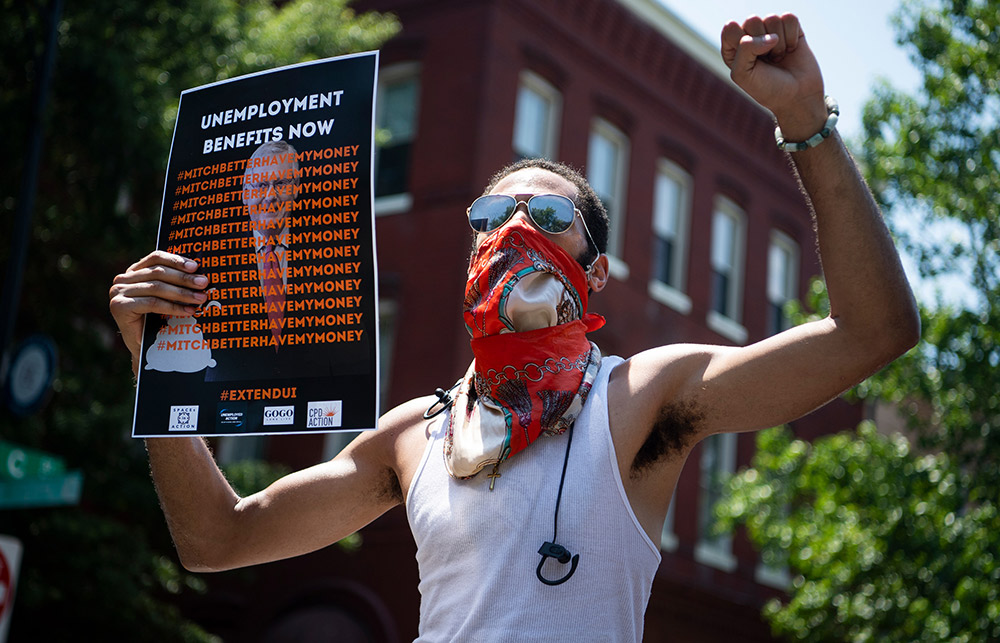
受新冠疫情影响,美国失业率高达11.1%,已经超过“经济大萧条”时期的峰值。虽然一些州幸免于难(蒙大拿州和怀俄明州),但另外一些在经济上严重依赖旅游业的州却遭受了重创,如内华达州、佛罗里达州和夏威夷州,许多人都担心是否还有就业机会以及何时复工。在这次疫情中,每个人经受的痛苦并不对等,美国黑人失业率要远远高于其他群体。与此同时,一系列疫情救助措施即将到期,经济学家指出,美国经济正在悬崖边徘徊。比如,每周额外发放的600美元联邦失业救济金将在本月底到期(特朗普政府高级官员们正在考虑延期或更换救助方案),以及禁止房东驱逐房客的临时禁令将在7月25日到期,势必将令许多美国家庭因为交不起房租而被逐出家园。
如今,美国人从最活跃抢手的就业市场之一陷入到如今惨谈的境地,这种一落千丈的恐惧感、忧虑感与失落感仅靠冷冰冰的数字是无法体现出来的。他们排着长长的队伍登记失业,冒着生命危险寻找工作。他们想知道如果学校在秋季仍然不开学,那么他们是否还能够正常工作。他们也请求立法者延长额外失业救济补助。现在,美国人担心自己的未来、健康与孩子,也担心自己的国家。
以下是美国失业的情况。



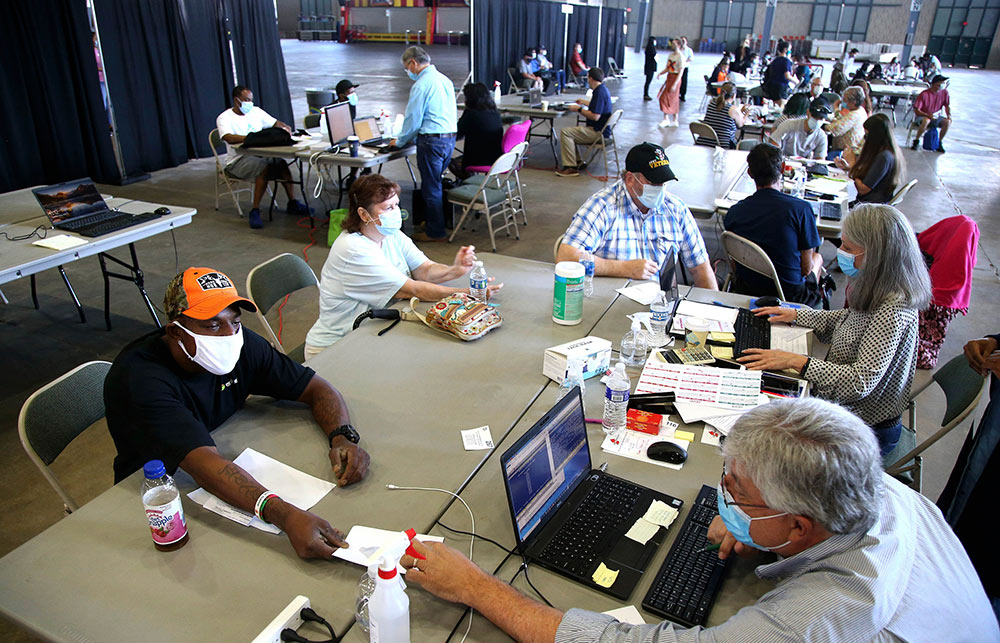
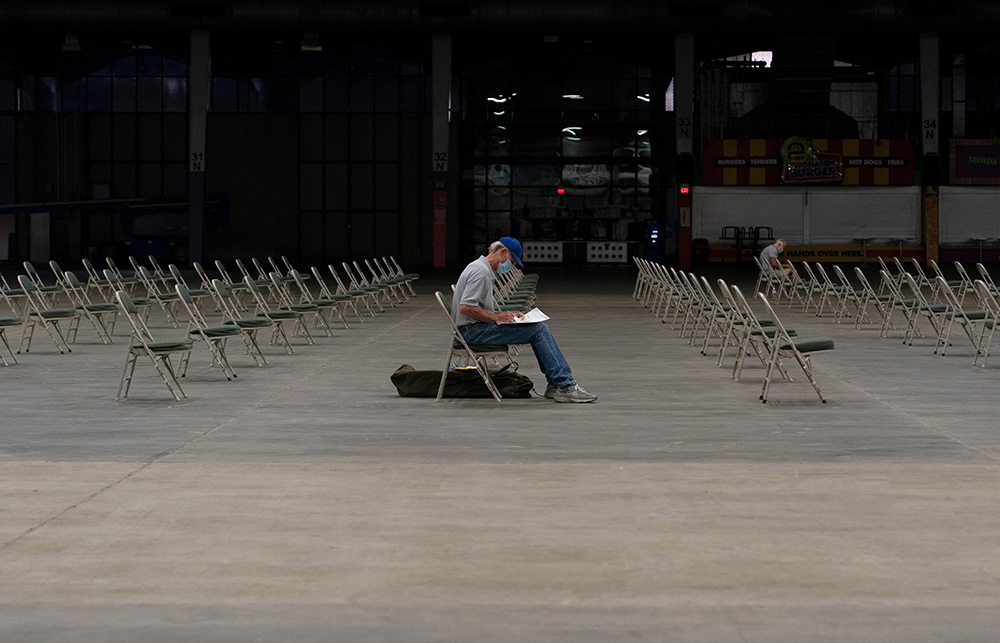
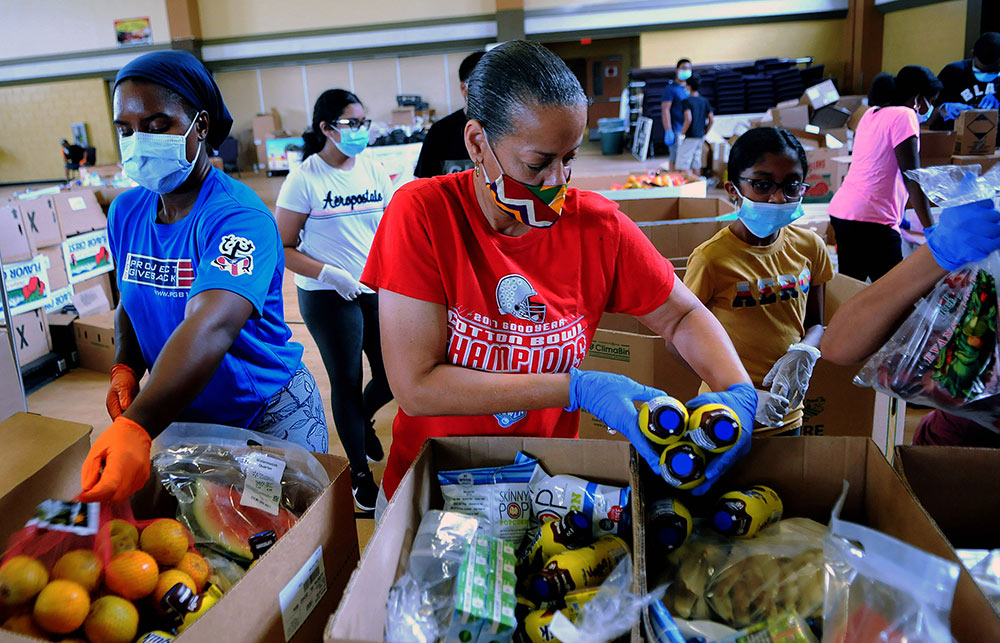


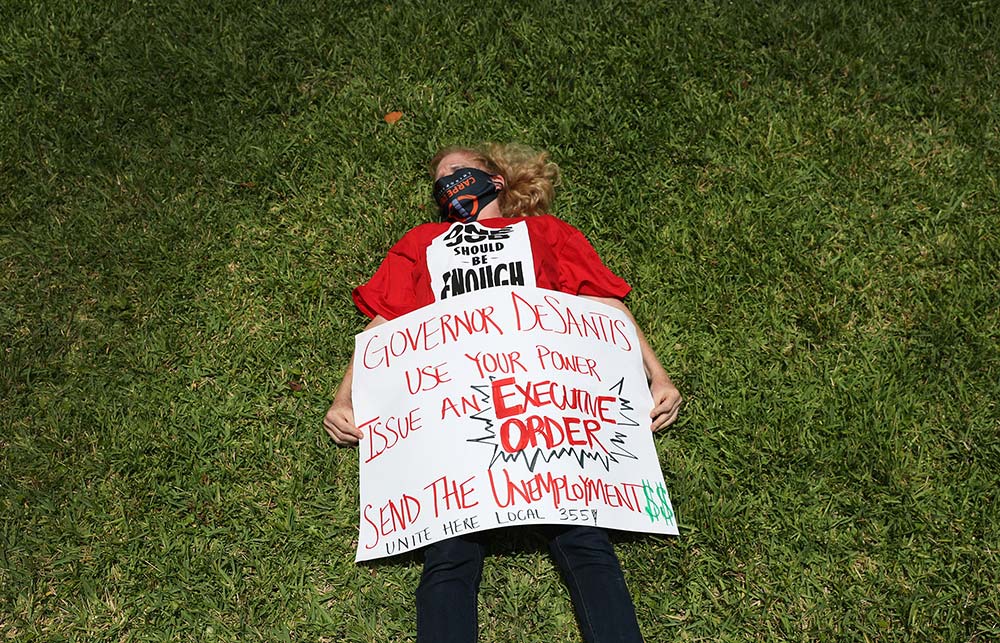
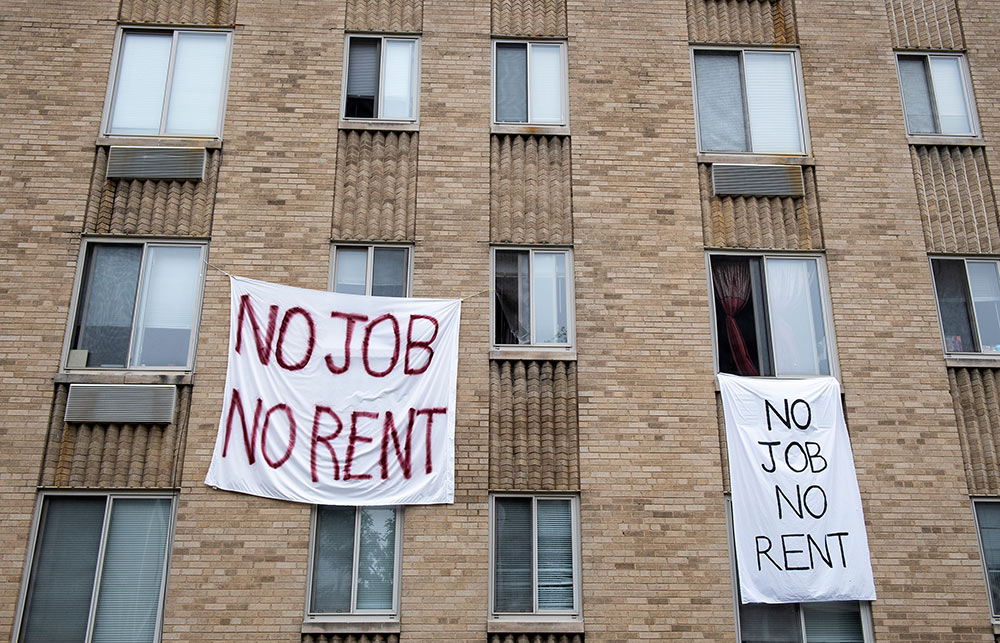

(财富中文网)
文字内容:Lee Clifford。图片编辑:Alex Scimecca。Lance Lambert对此文亦有贡献。
编译:于佳鑫
从统计数据来看,3月下旬,美国新增申请失业救济人数激增,达到690万人。此后,美国失业人数逐渐稳定在每周140万人左右。
受新冠疫情影响,美国失业率高达11.1%,已经超过“经济大萧条”时期的峰值。虽然一些州幸免于难(蒙大拿州和怀俄明州),但另外一些在经济上严重依赖旅游业的州却遭受了重创,如内华达州、佛罗里达州和夏威夷州,许多人都担心是否还有就业机会以及何时复工。在这次疫情中,每个人经受的痛苦并不对等,美国黑人失业率要远远高于其他群体。与此同时,一系列疫情救助措施即将到期,经济学家指出,美国经济正在悬崖边徘徊。比如,每周额外发放的600美元联邦失业救济金将在本月底到期(特朗普政府高级官员们正在考虑延期或更换救助方案),以及禁止房东驱逐房客的临时禁令将在7月25日到期,势必将令许多美国家庭因为交不起房租而被逐出家园。
如今,美国人从最活跃抢手的就业市场之一陷入到如今惨谈的境地,这种一落千丈的恐惧感、忧虑感与失落感仅靠冷冰冰的数字是无法体现出来的。他们排着长长的队伍登记失业,冒着生命危险寻找工作。他们想知道如果学校在秋季仍然不开学,那么他们是否还能够正常工作。他们也请求立法者延长额外失业救济补助。现在,美国人担心自己的未来、健康与孩子,也担心自己的国家。
以下是美国失业的情况。
7月21日,在盐湖城,因为新冠疫情而被迫失业的工人。
7月16日,在佛罗里达州迈阿密斯普林斯,抗议者要求参议员支持延长失业救济金计划。
2020年7月15日,在奥马哈的一场招聘会上,贾马尔•阿达梅(右)正在分发有着空缺职位信息的口袋。内布拉斯加州恢复了大多数申请失业救济民众的求职要求。
7月15日,在塔尔萨世博广场,俄克拉何马州就业保障委员会的吉姆•波利(右下)正在帮助米卡•巴内特(左),后者在失业前是一名厨师。
7月15日,在塔尔萨的一场招聘会上,一名男子一边填写文书,一边等待着来电。
7月6日,志愿者在命运之城教堂为佛罗里达州中部第二丰收食品银行准备食物。奥兰多地区对食物一直存在旺盛需求,因为大量从事服务业的工作者和其他工人都因为新冠疫情而失业。
6月18日,为领取失业救济金,人们在法兰克福的肯塔基就业中心外排队等候。
6月19日,数百名失业的肯塔基州居民为领取失业救济金,在法兰克福的肯塔基就业中心外排着长队等待。
盖尔•诺曼参加了5月22日在迈阿密海滩举行的抗议活动,要求佛罗里达州恢复失业救济补助。
5月18日,华盛顿特区子午线大楼上悬挂着标语。
4月7日,塔蒂阿娜•费尔南德斯在佛罗里达州希亚利亚向迈阿密戴德县居民分发失业文件。
文字内容:Lee Clifford。图片编辑:Alex Scimecca。Lance Lambert对此文亦有贡献。
(财富中文网)
编译:于佳鑫
The numbers tell one story. Following an almost unimaginable spike to 6.9 million new unemployment claims in late March, the number of unemployed Americans has gradually settled to around 1.4 million new claims per week.
Prior to the pandemic, claims had never been above 700,000. But that still puts the unemployment rate at 11.1%—higher than the Great Recession peak. While some states have been spared the worst (Montana and Wyoming), others that depend heavily on tourism (Nevada, Florida, and Hawaii) have sustained brutal economic trauma that have many wondering when—and if—the jobs will ever come back. We know already that the pain has not been spread evenly, with Black Americans seeing a much higher spike in unemployment than other groups. Meanwhile with the extra $600 in weekly federal unemployment benefits scheduled to expire (Congress is weighing options for an extension or replacement), and the federal moratorium on evictions ending July 25, many economists fear American families are about to fall off a financial cliff.
And that’s a story the numbers don’t tell. The worry, and fear, and hope, and sense of loss facing those Americans who plunged from one of the tightest job markets in history, into one of the most bleak. They’re braving long lines to register for unemployment. Navigating slow and faulty state systems. Risking their own health to look for work. Wondering whether they’ll be able to work at all if schools don’t reopen in the fall. Joining protests to implore legislators to extend extra federal benefits. They are worried about their future, they’re worried about their health, they’re worried about their kids, and they’re worried about their country.
Here’s what that looks like, as the pandemic of unemployment spreads across the country.
Special events workers who were forced out of their jobs because of the COVID-19 pandemic march in Salt Lake City on July 21.
Protesters ask senators to support the continuation of unemployment benefits on July 16 in Miami Springs, Fla.
Jmal Adame (at right) hands out information packets on open positions at a drive-thru job fair in Omaha on July 15, 2020. Nebraska reinstated a job-search requirement for most people claiming unemployment benefits.
Micah Barnett (left), a former cook left jobless in the wake of the COVID-19 pandemic, is helped by Jim Polly (bottom right) from the Oklahoma Employment Security Commission at Expo Square in Tulsa, on July 15.
A man fills out paperwork while waiting for his number to be called at a job fair in Tulsa on July 15.
Volunteers prepare boxes of food for the Second Harvest Food Bank of Central Florida at City of Destiny church on July 6. The demand for food persists in the Orlando area, owing to the large numbers of service workers and others who have lost their jobs as a result of the pandemic.
People line up outside the Kentucky Career Center in Frankfort prior to its opening to get assistance with their unemployment claims on June 18.
Hundreds of unemployed Kentucky residents wait in long lines outside the Kentucky Career Center in Frankfort on June 19 for help with their unemployment claims.
Gail Norman participates in a die-in protest on May 22 in Miami Beach, asking the State of Florida to fix its unemployment benefits system.
Signs hang from the Meridian Heights apartment building in Washington, D.C., on May 18, 2020.
Tatiana Fernández distributes unemployment documents to residents of Miami-Dade County in Hialeah, Fla., on April 7.
Text by Lee Clifford. Photo editor: Alex Scimecca. Additional reporting by Lance Lambert.













